Small pantries pose unique challenges, but with creative solutions and smart organization, even the tiniest space can become a highly functional food storage area. This article presents 20 detailed ideas—each supported by expert tips and real-world examples—to help you maximize vertical space, streamline access, and keep your pantry looking neat. From DIY projects using repurposed materials to off-the-shelf organizers designed for narrow gaps, you’ll find strategies tailored to slim walk-in closets or shallow cabinets. Whether you’re working with a pantry the size of a broom closet or a small kitchen cabinet, these ideas will unlock hidden potential and transform clutter into clarity.
1. Install Pull-Out Drawers
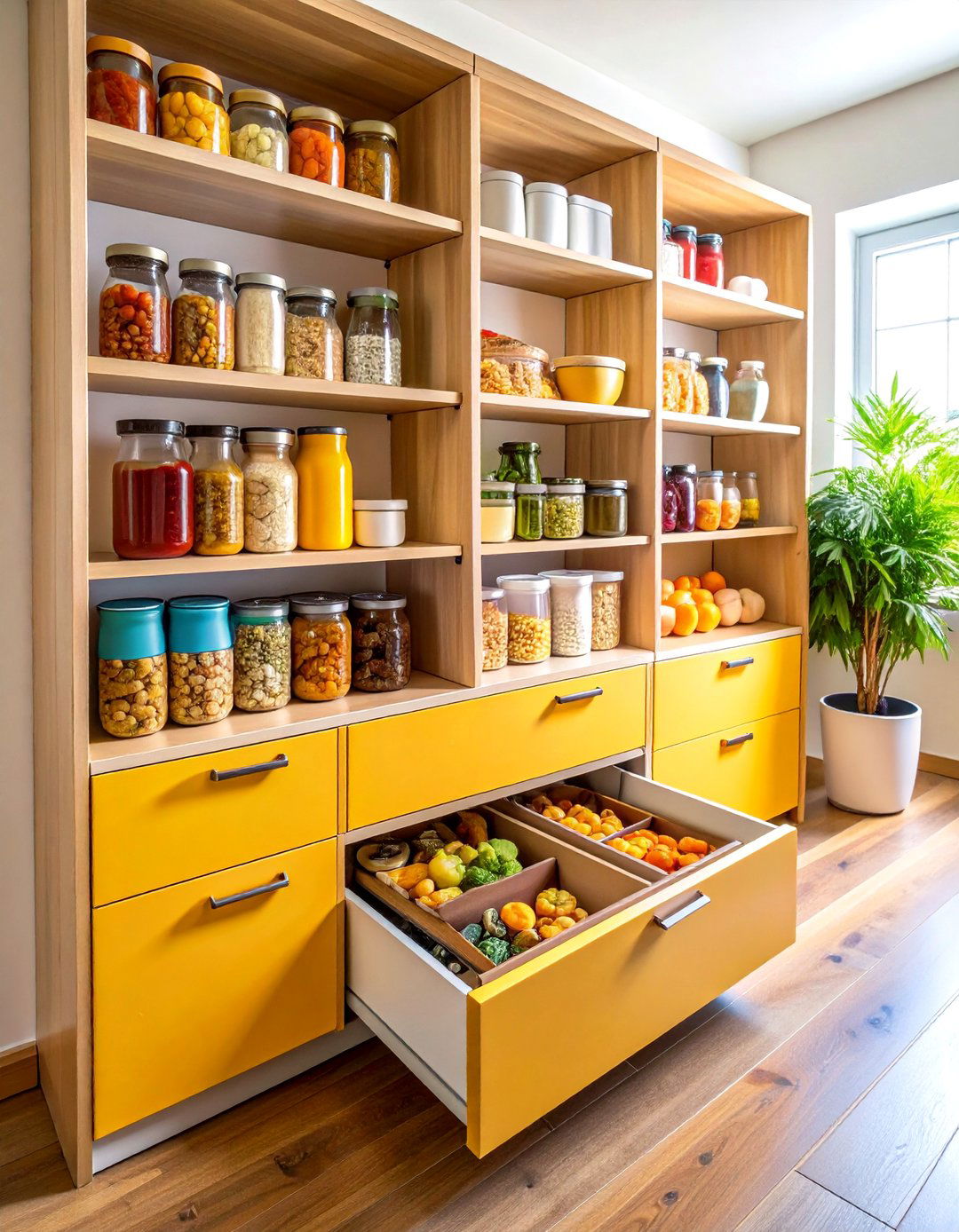
Pull-out drawers bring pantry contents to you, eliminating the need to reach into deep shelves and reducing wasted dead space. Professional organizers recommend installing custom or modular drawers that fit within existing shelving units; these slides allow you to see and access items stored at the back without removing everything up front. For a budget-friendly option, consider rolling drawer inserts designed for kitchen cabinets, which can be moved to suit changing storage needs while protecting floors from scratches.
2. Use Door-Mounted Organizers
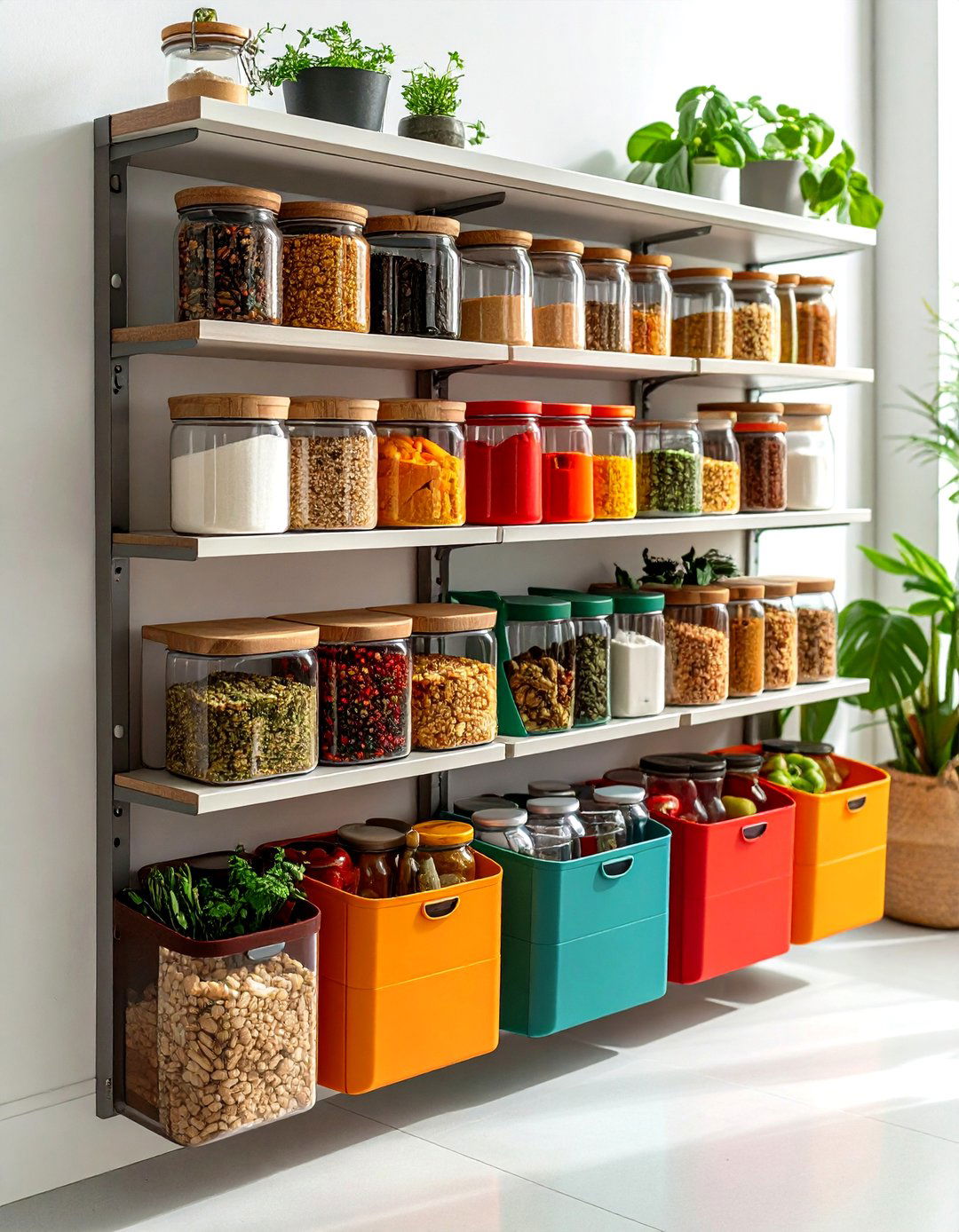
The inside of pantry doors offers valuable real estate for slim organizers, often overlooked in small spaces. Over-the-door racks can hold spices, snacks, or condiments, freeing up shelf room for bulkier items. Alternatively, adhesive-backed baskets attach directly to smooth surfaces without hardware, making them ideal for renters. Prioritize organizers with adjustable pockets or bins so you can customize the layout as your inventory changes, ensuring maximum flexibility.
3. Employ Slim Rolling Carts
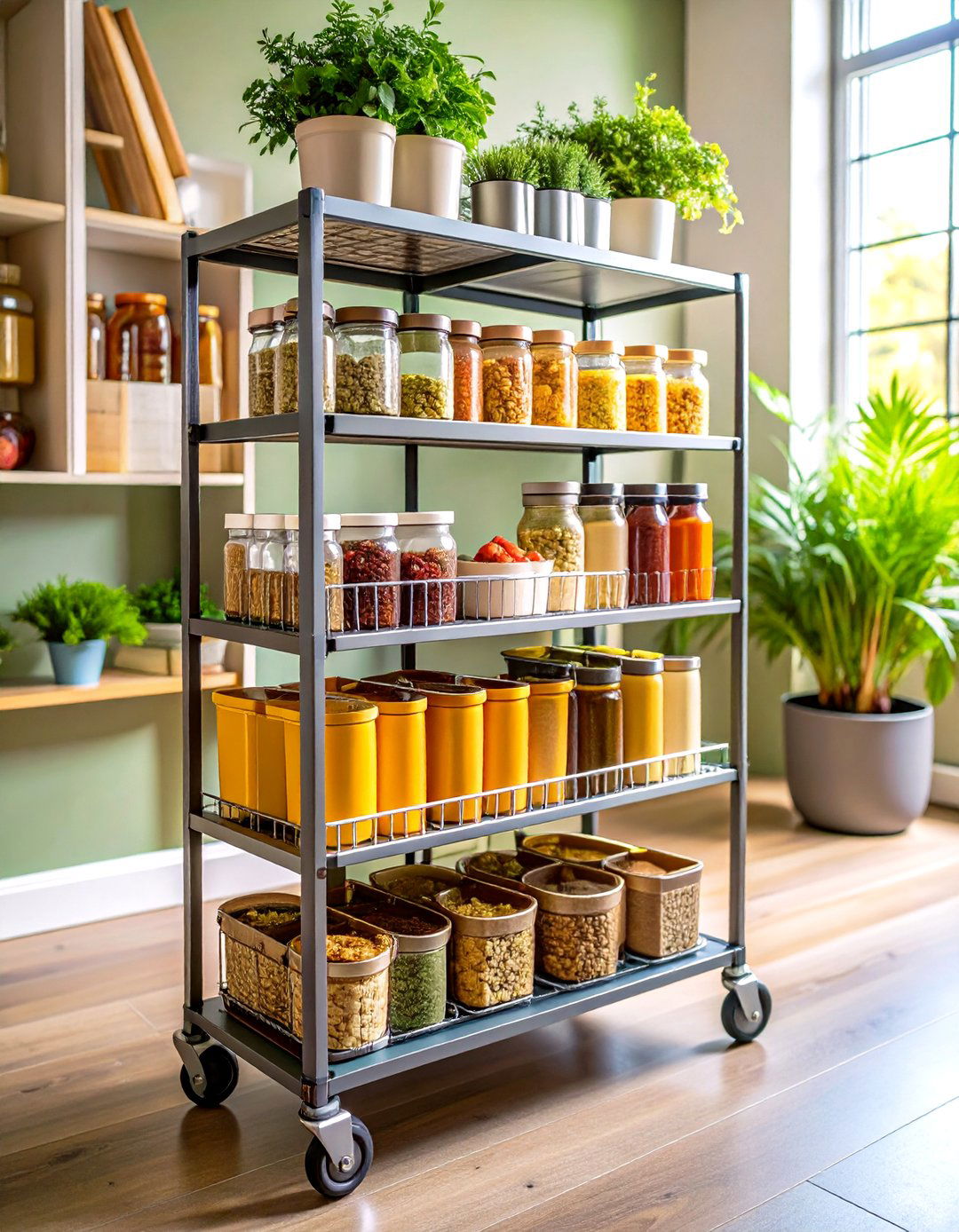
Slim, rolling carts are perfect for narrow gaps between cabinets or appliances and can be pulled out when needed. These carts typically feature multiple tiers, allowing for vertical stacking of canned goods and pantry staples. They’re especially useful for frequently used items like oils and spices: simply roll the cart out from its sleeve, grab what you need, and roll it back. Because they’re not permanently fixed, they also work well in rented kitchens where you can’t install built-in storage.
4. Utilize Lazy Susans
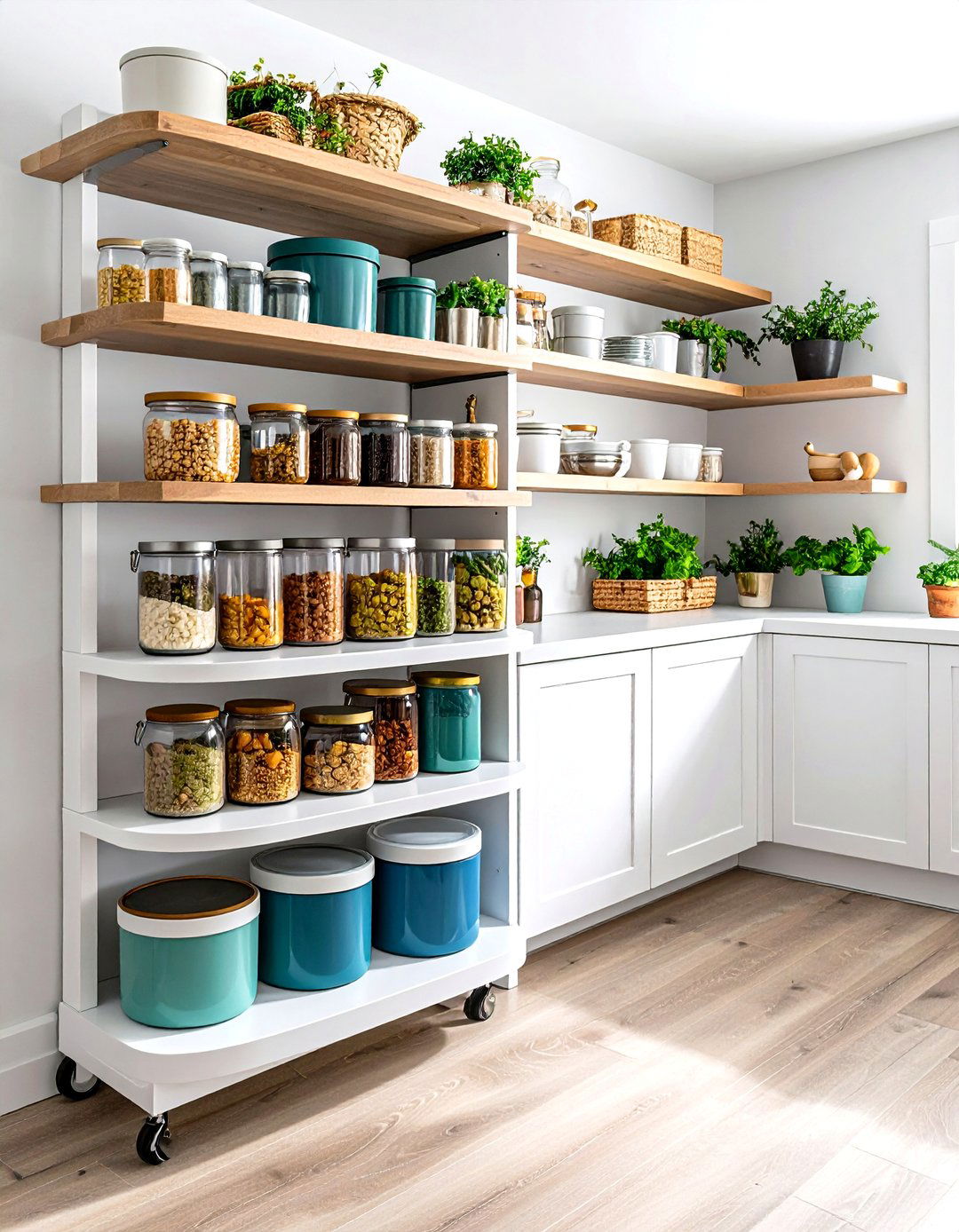
A Lazy Susan turntable maximizes corner space and ensures that nothing is lost in the back of a pantry shelf. Place one on each shelf level to rotate through jars, bottles, and canned goods effortlessly instead of digging past front items. For narrow pantries, slim-profile models work best; some even offer tiered levels to further boost capacity. Choose a model with non-skid feet to prevent sliding when you spin it.
5. Label Uniform Containers
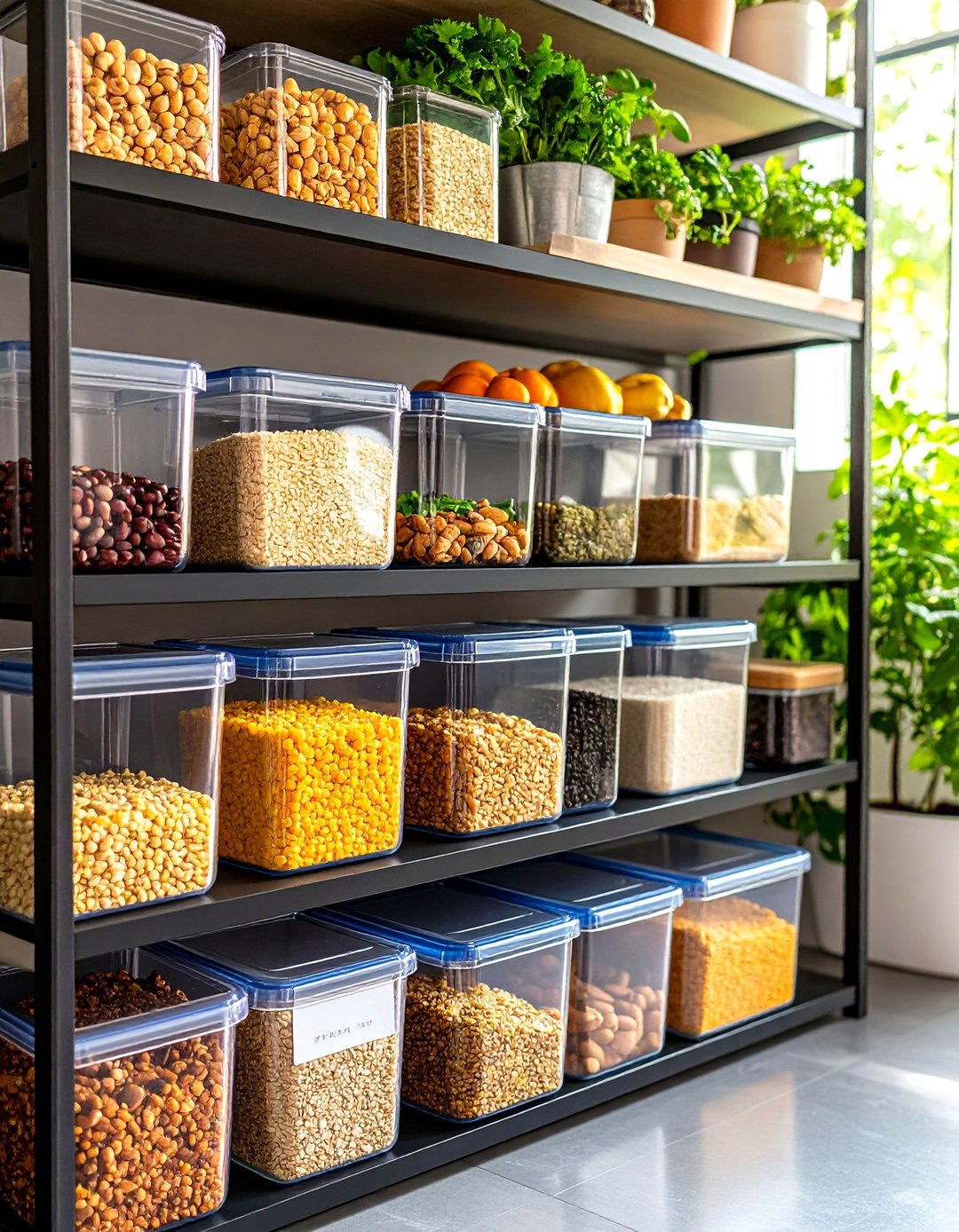
Decanting dry goods into matching, airtight containers not only enhances the aesthetic of your pantry but also provides practical benefits. Clear canisters let you see contents at a glance and prevent spoilage by keeping items sealed from moisture and pests. Use printable or chalkboard labels to identify contents and expiration dates. Consistent container shapes stack neatly, optimizing vertical space and maintaining visual uniformity, which helps you spot empty or low-stock items quickly.
6. Add Under-Shelf Baskets
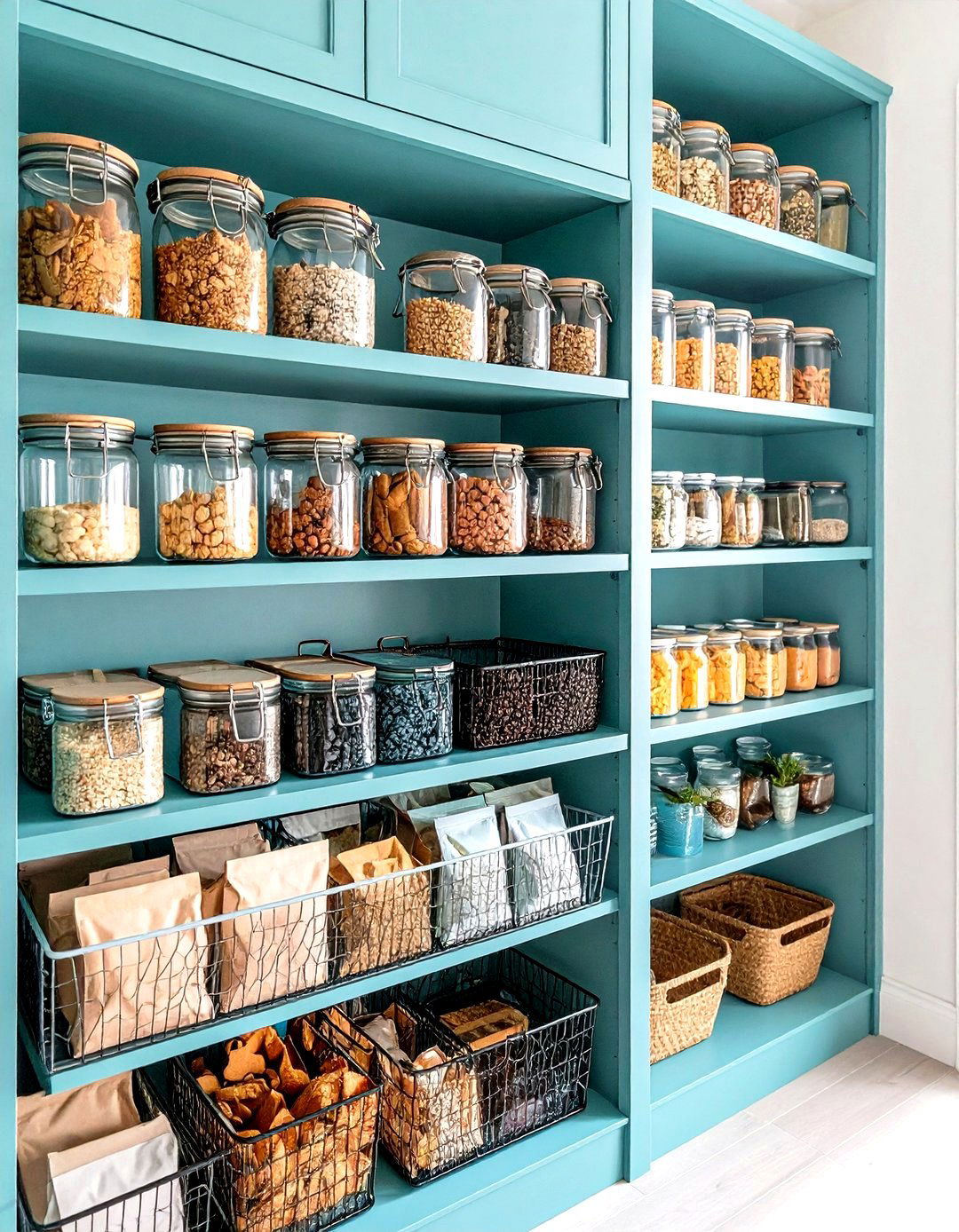
Under-shelf baskets clip onto existing shelves, creating additional layers of storage below each shelf surface. These baskets are ideal for lightweight items like snack packs, tea bags, or muffin liners, keeping them off the main shelf yet still in easy reach. They’re simple to install—just slide onto a wire or wooden shelf edge—and can be repositioned as needed. Using baskets in varying sizes accommodates both small and slightly bigger items, further eliminating wasted vertical space.
7. Hang Magnetic Racks
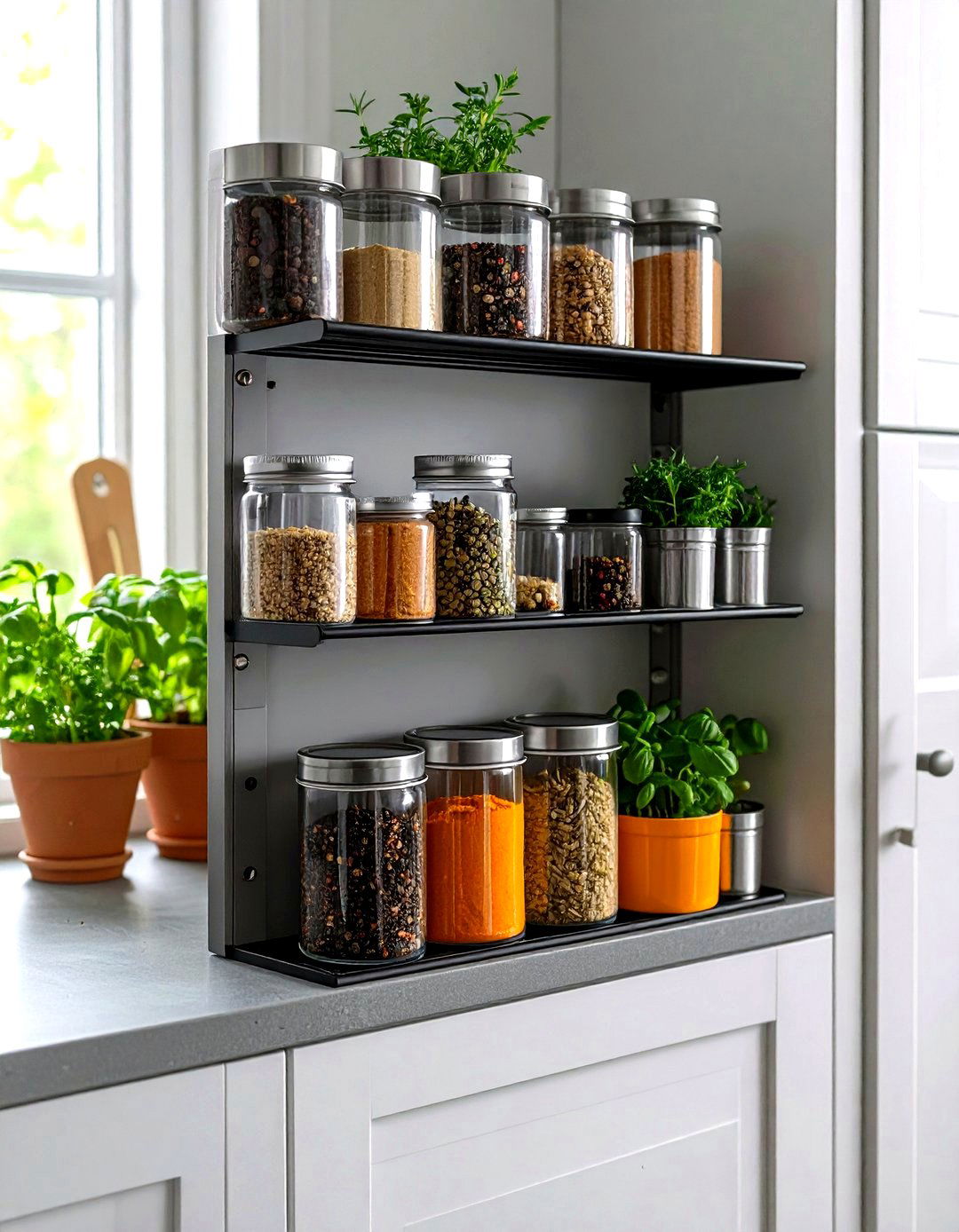
Magnetic strips or racks affixed to the sidewalls or door of a metal pantry cabinet provide storage for spice tins, knife blocks, or small metal containers. Since magnets adhere without drilling, this method suits rental units where permanent installation isn’t allowed. You can even mount magnetic spice tins directly onto the strip, freeing shelf space for larger pantry staples. Ensure magnets are strong enough to support weight and use bump-guards to prevent items from shifting when opening or closing doors.
8. Use Tiered Shelf Organizers
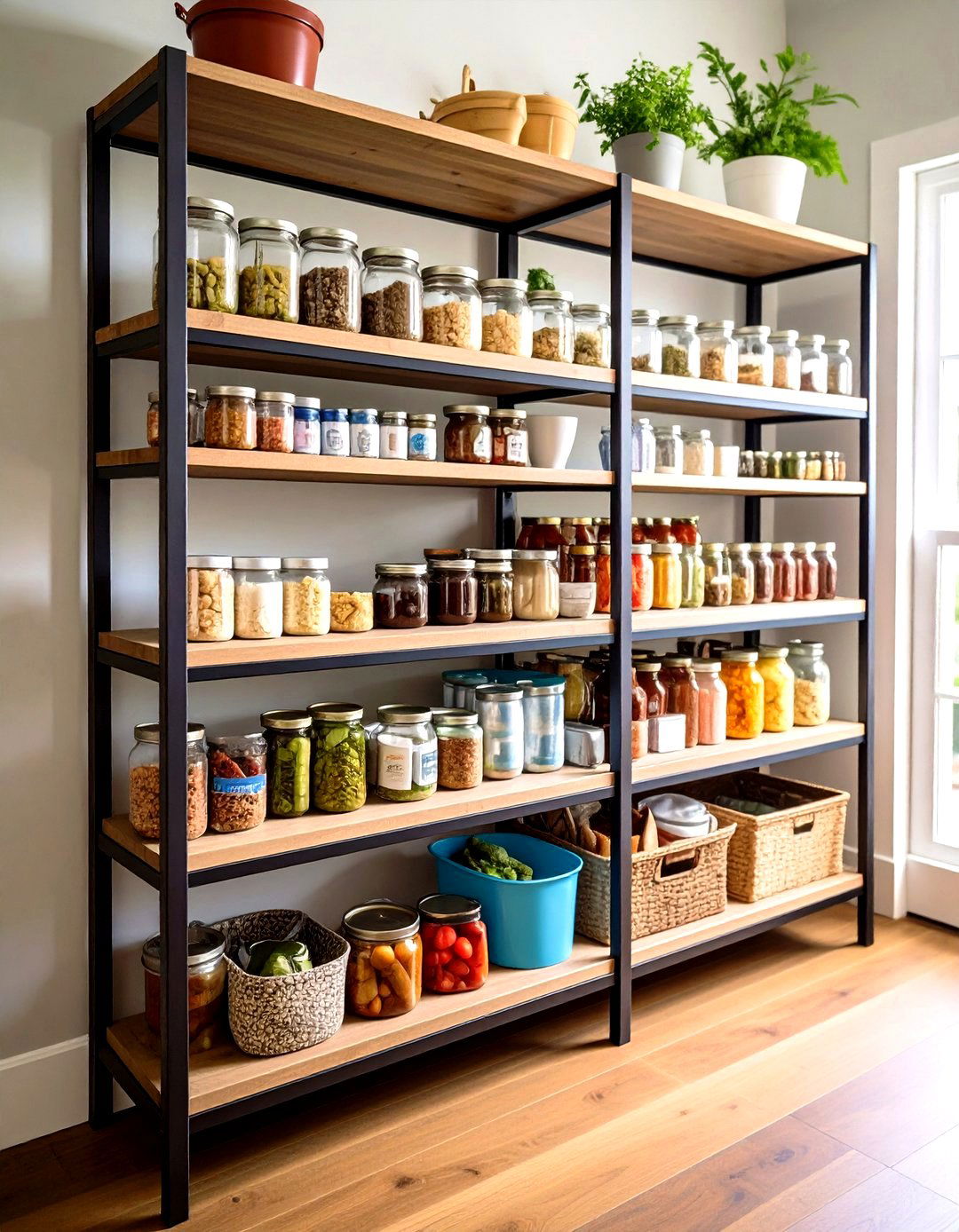
Tiered or step-style shelf risers create visibility for shorter items stored in back rows. Placing cans, bottles, or jars on these risers means you won’t have to remove front items to see what’s behind, reducing the chance of forgotten goods expiring in the back. Adjustable risers accommodate various shelf heights and can be nested when not in use. Opt for ventilated designs to allow air circulation and prevent moisture buildup.
9. Incorporate Pegboard Walls
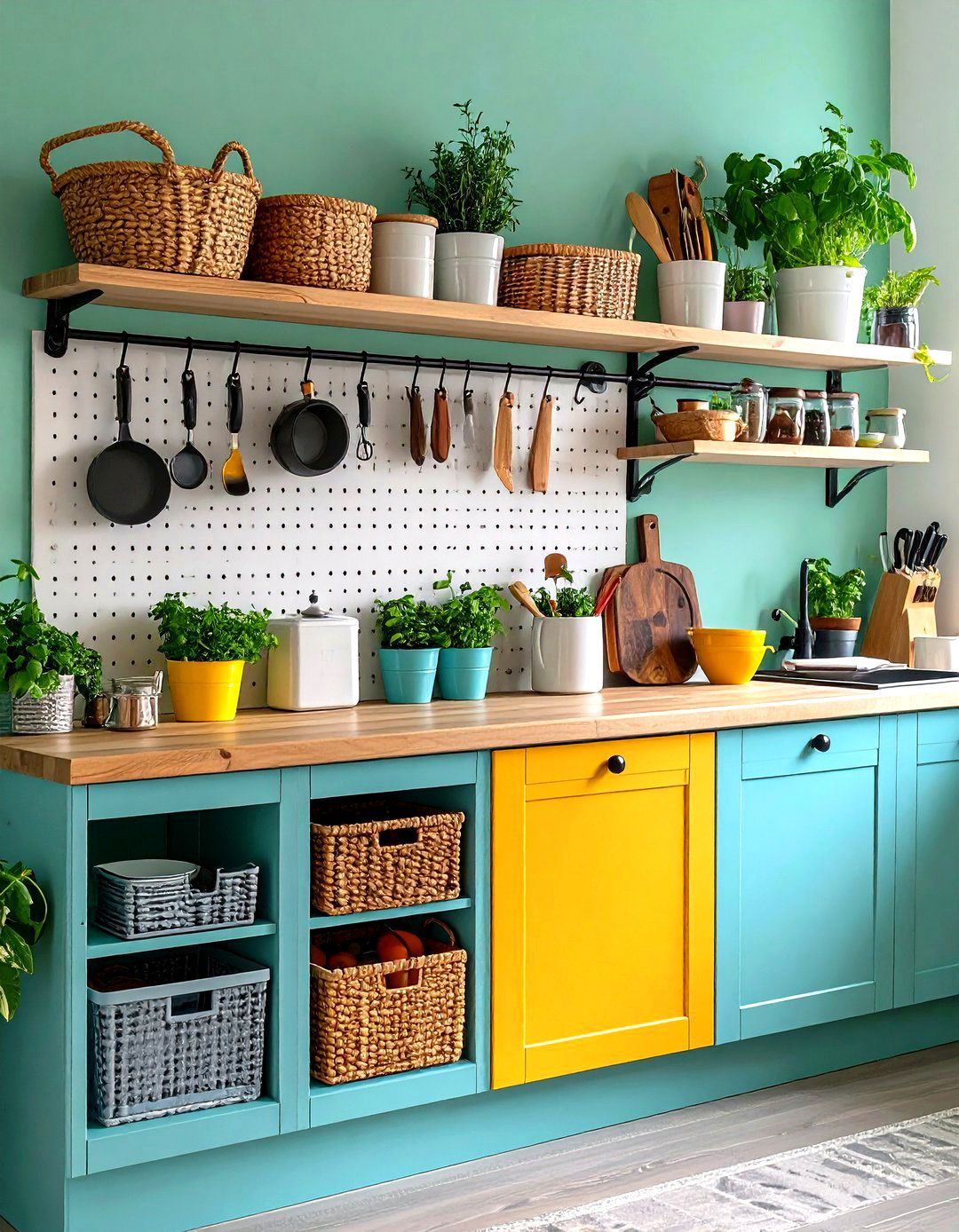
Installing a pegboard on a pantry wall or behind open shelving turns it into a customizable command center for hooks, baskets, and pull-out bins. Pegboards can hold mugs, measuring cups, or small baskets of packets and twist ties, making quick grabs seamless during cooking. Painting the pegboard to match your kitchen decor adds a decorative touch. Since pegboards are lightweight, even drywall anchors suffice for secure mounting in most setups.
10. Insert Vertical Dividers

Vertical shelf dividers create slots for baking sheets, cutting boards, and platters so they stand upright and don’t slide around. This prevents overcrowding on shelves and makes each piece easily accessible without shifting stacks. Dividers can be free-standing or hardware-mounted. For extra utility, choose dividers with adjustable positions to adapt to different item widths, ensuring both narrow cookie sheets and wider lids have tailored slots.
11. Repurpose a Bookshelf
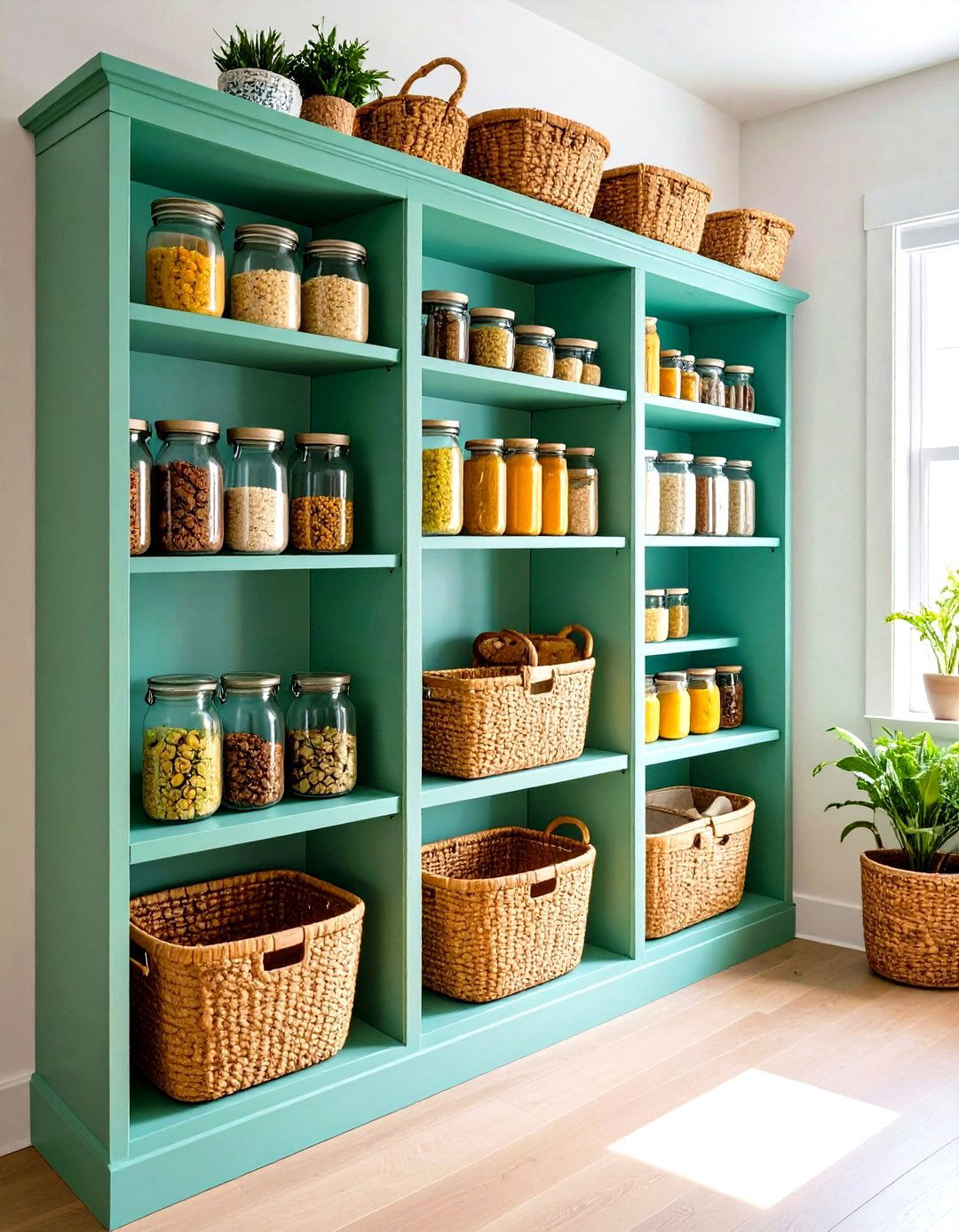
A skinny bookshelf can serve as a freestanding pantry unit in tight spaces or alcoves. Bookshelves offer open access on all sides and can be styled with decorative bins to enhance aesthetics. By placing baskets on the shelves, you can group similar items—such as snacks, pasta, or cereals—and pull out the entire basket when needed. Secure the bookshelf to the wall with brackets to prevent tipping, especially if you store heavier jars or appliances on the lower shelves.
12. Maximize Door Hinges with Tension Rods

Tension rods between pantry walls or doors create hanging space for spray bottles, dishcloths, or even funnel racks. They’re adjustable to fit almost any width and install without tools; simply twist to expand into place. Hang baskets or S-hooks from the rod to hold measuring spoons, pot lids, or cleaning supplies. Since tension rods are easily removed, they’re renter-friendly and allow you to reconfigure hanging storage quickly.
13. Utilize Clear Stackable Bins

Clear, stackable bins double as both storage containers and organizational units. Sort items by category—baking, snacks, grains—and stack bins vertically to occupy full shelf height. Transparent plastic makes inventory checks instant, so you always know when to restock. Bin labels further enhance order, while built-in handles allow you to pull an entire bin forward to access contents without disturbing neighboring stacks.
14. Apply Adhesive Floating Shelves
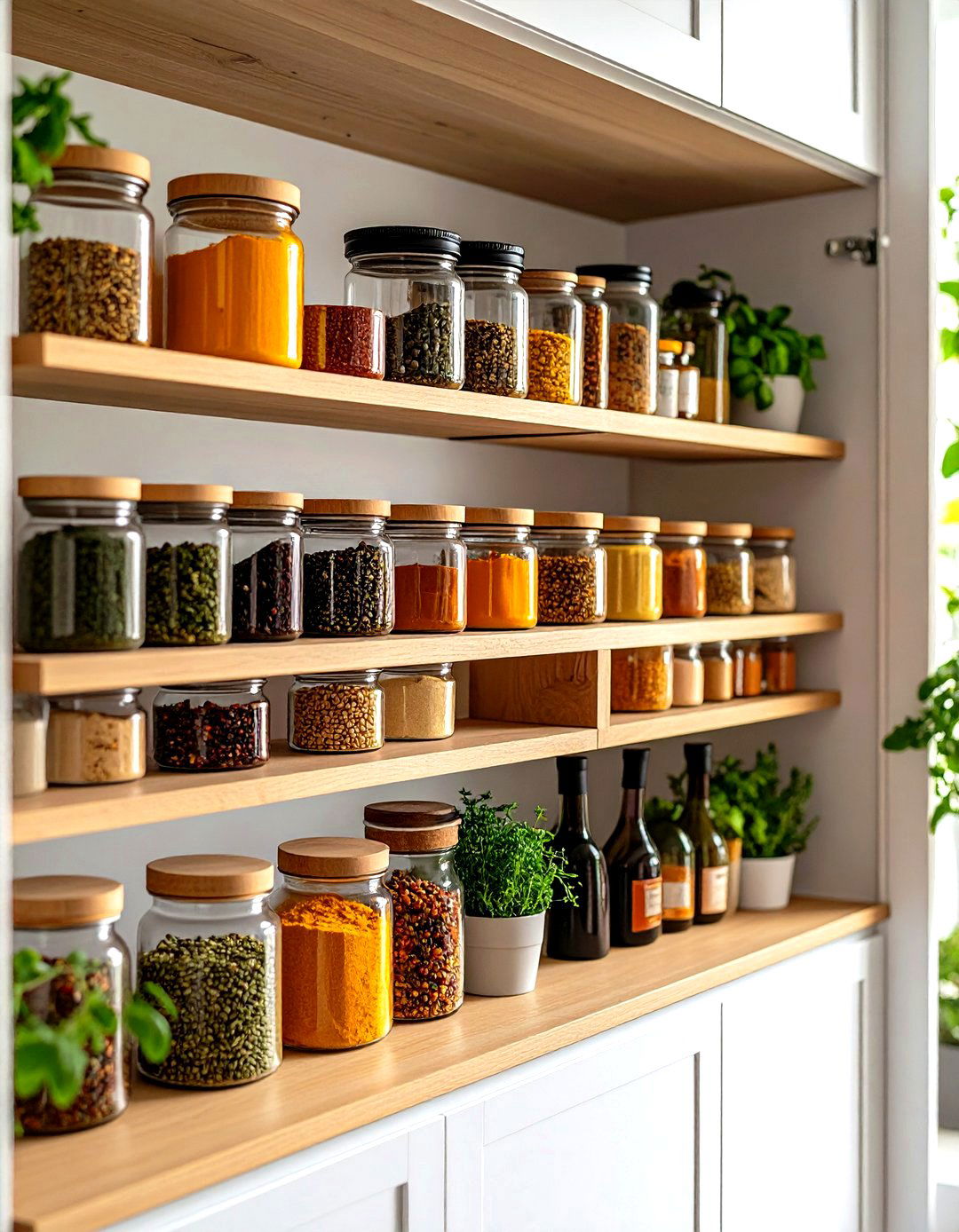
Adhesive floating shelves mount directly onto cabinet walls or pantry doors without screws, ideal for light items like spice jars or small bottles. Brands offering strong, removable adhesives ensure a damage-free removal when you relocate or repaint. These shelves open up vertical zones that would otherwise be blank. Install multiple shelves in staggered patterns to accommodate items of different heights and create visual interest alongside functionality.
15. Install Pull-Down Pantry Shelves
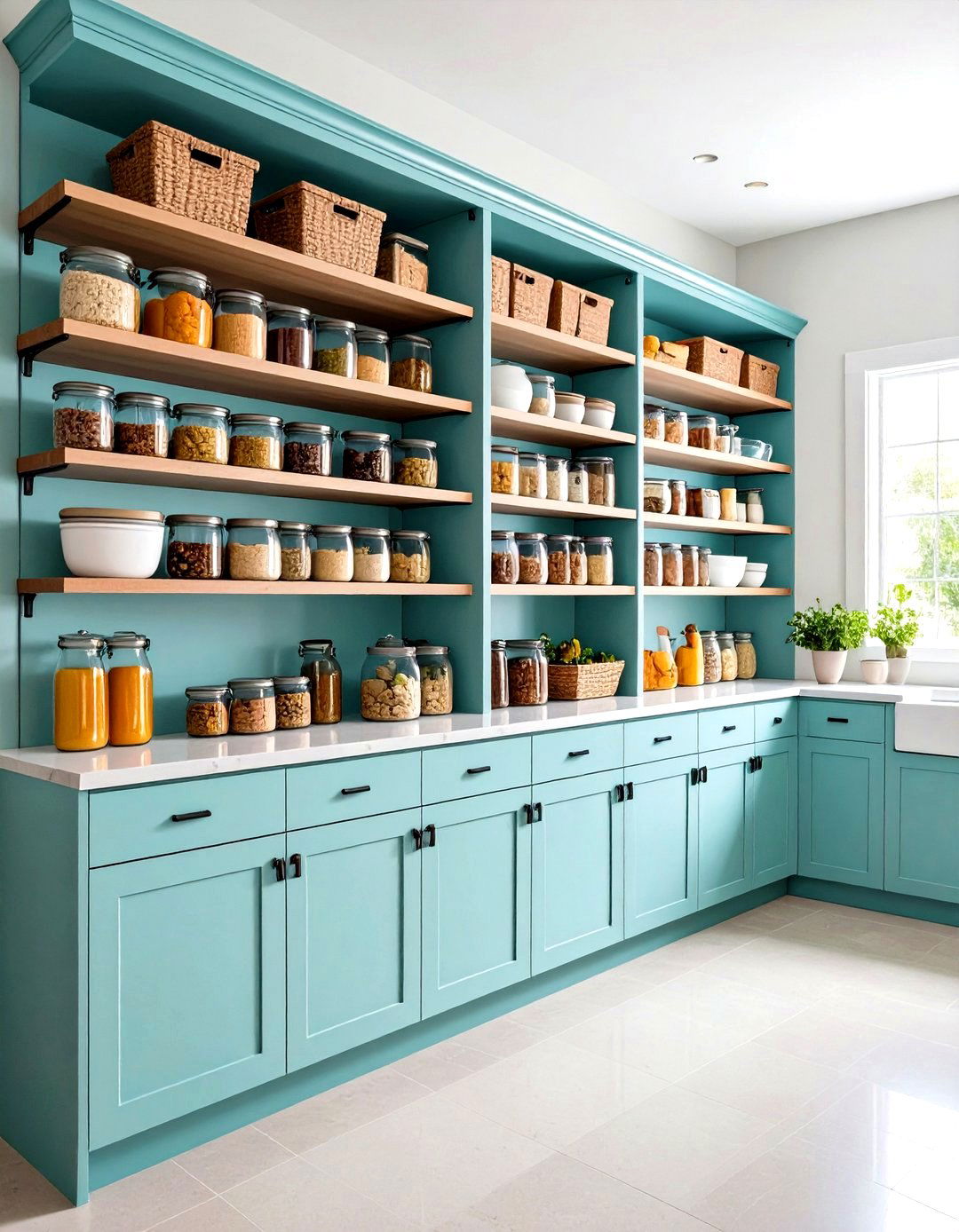
For taller pantries, pull-down shelf mechanisms bring higher shelves within reach at the pull of a handle. These systems hinge downward, lowering contents to countertop level and then locking back into place safely. While initially more expensive, they pay off in accessibility and safety—no more standing on stools to reach the top shelf. Consult a carpenter or use retrofit kits designed for DIY installation to fit existing cabinet openings.
16. Employ Overhead Hanging Racks
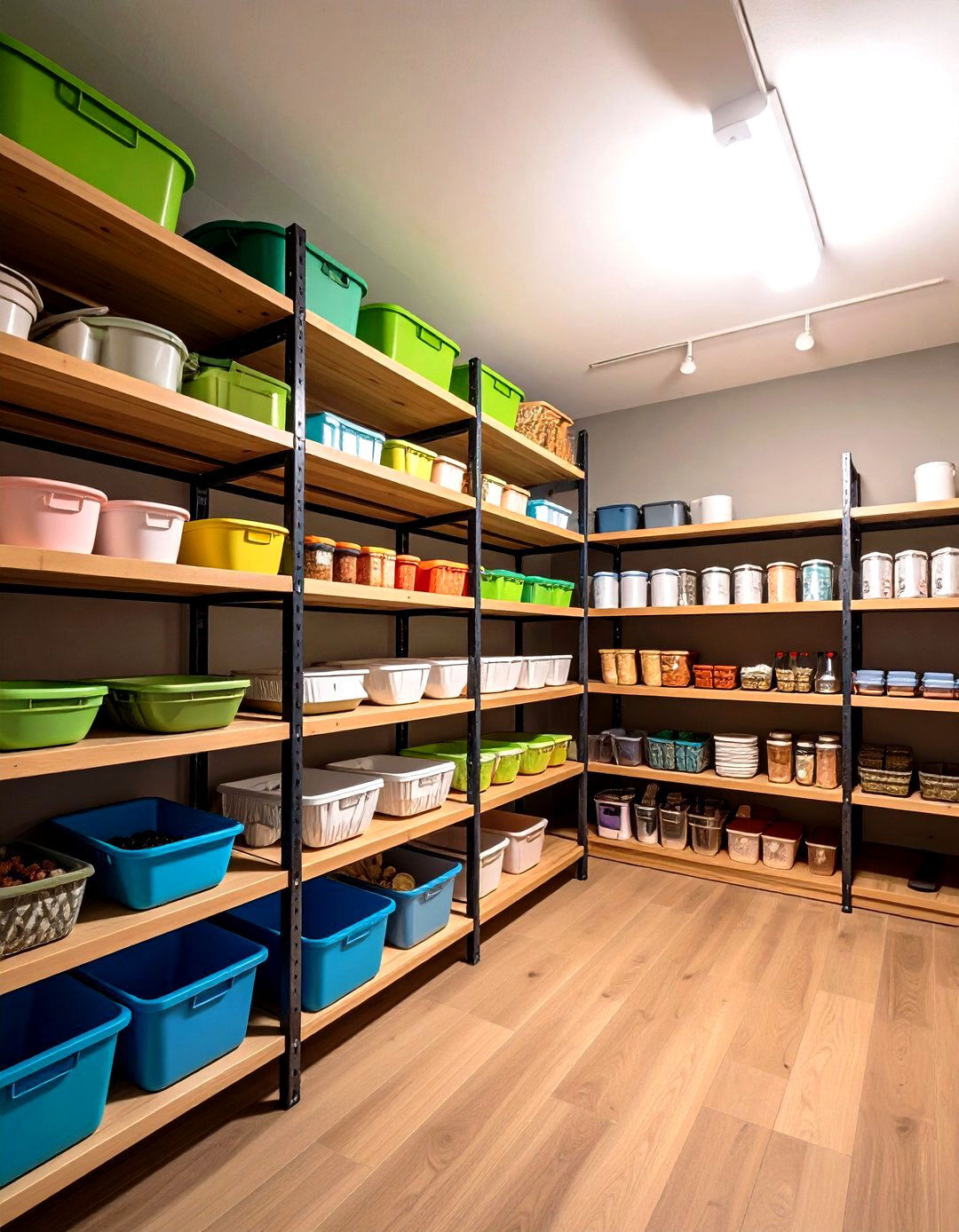
If your pantry space extends to a walk-in closet ceiling, overhead hanging racks can store seldom-used items like party platters or bulk paper goods. Choose wire racks to prevent dust accumulation and for better air circulation. These racks screw directly into ceiling joists and can hold substantial weight, keeping the lower pantry area clear for everyday essentials. Label each rack section to avoid digging through boxes when searching for items.
17. Group Items in Basket Bins
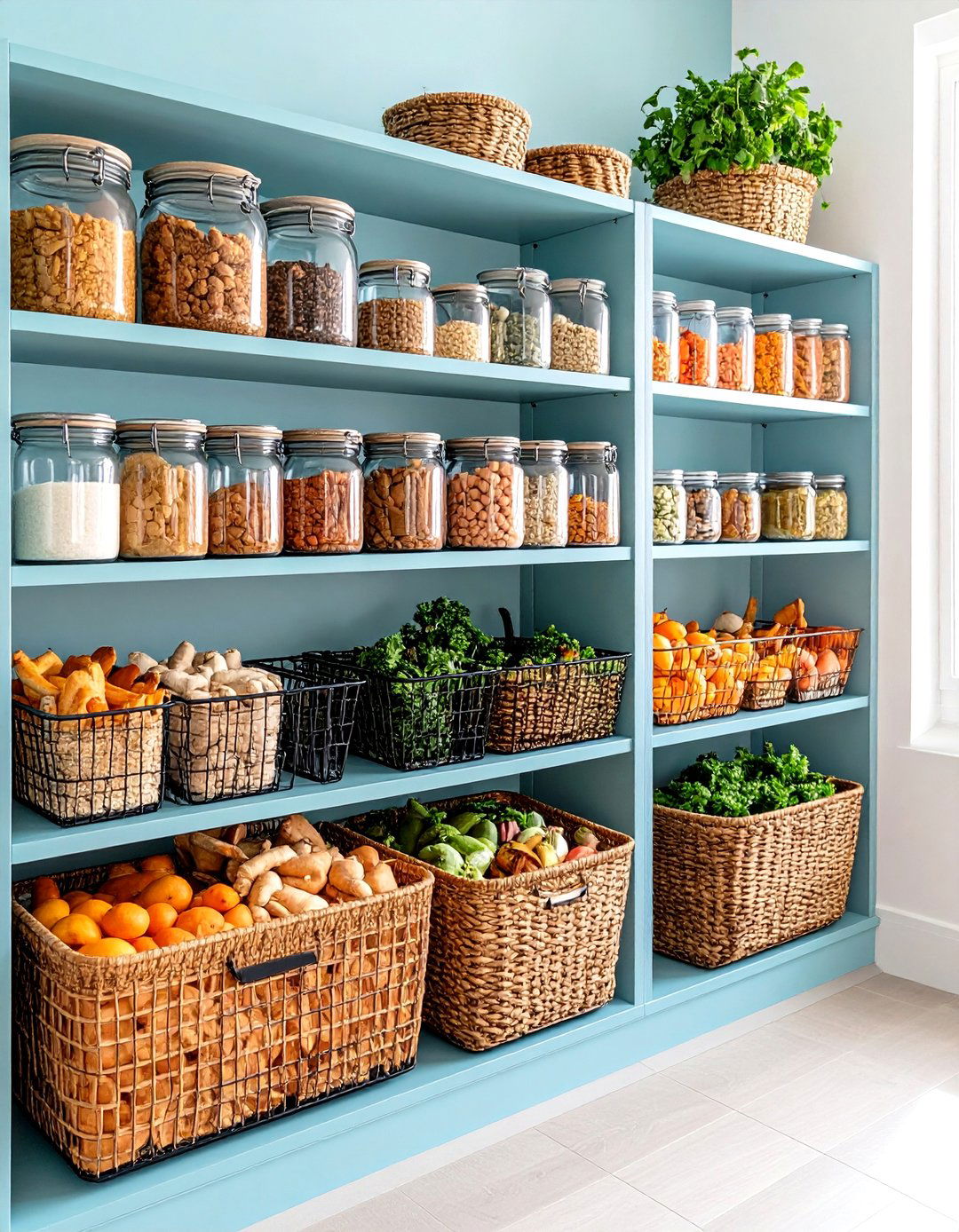
Wicker or wire baskets corral loose, awkward-shaped goods—snack pouches, root vegetables, or condiment packets—into grab-and-go categories. Baskets make use of open shelving more attractive and keep small items from tumbling around. Adding liners or removable fabric inserts protects basket interiors from spills and debris. Assign each basket a label or tag so everyone in the household knows where to return items after use.
18. Mount Spice Racks on Sidewalls
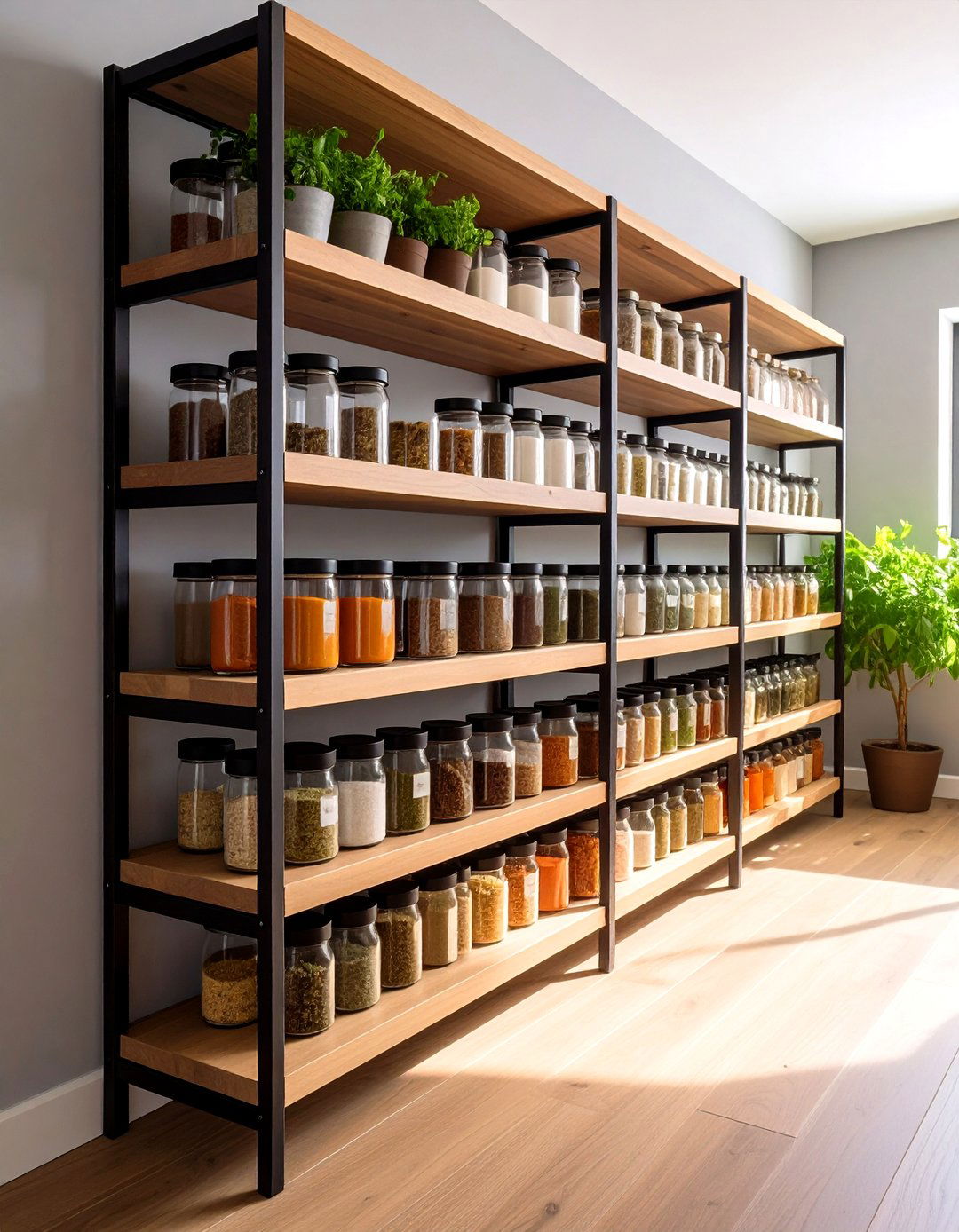
Slim spice racks affixed to pantry sidewalls—either screw-mounted or adhesive—maximize narrow, underutilized surfaces. These racks hold small bottles at a slight incline, displaying labels clearly for quick identification. Position multiple racks vertically to house a full spice collection within a few inches of wall space. This setup frees shelf fronts for larger jars and minimizes clutter on main shelf surfaces.
19. Add LED Strip Lighting

Good lighting transforms a cramped pantry into an inviting, easy-to-navigate space. Adhesive LED strip lights affixed under shelves or along door frames provide bright, even illumination without the need for retrofitting hardwired fixtures. Many LED strips are battery-powered with motion sensors, turning on automatically when you open the door. This enhancement not only improves visibility but also highlights your organized storage, making it easier to maintain order.
20. DIY Painted Mason Jar Storage
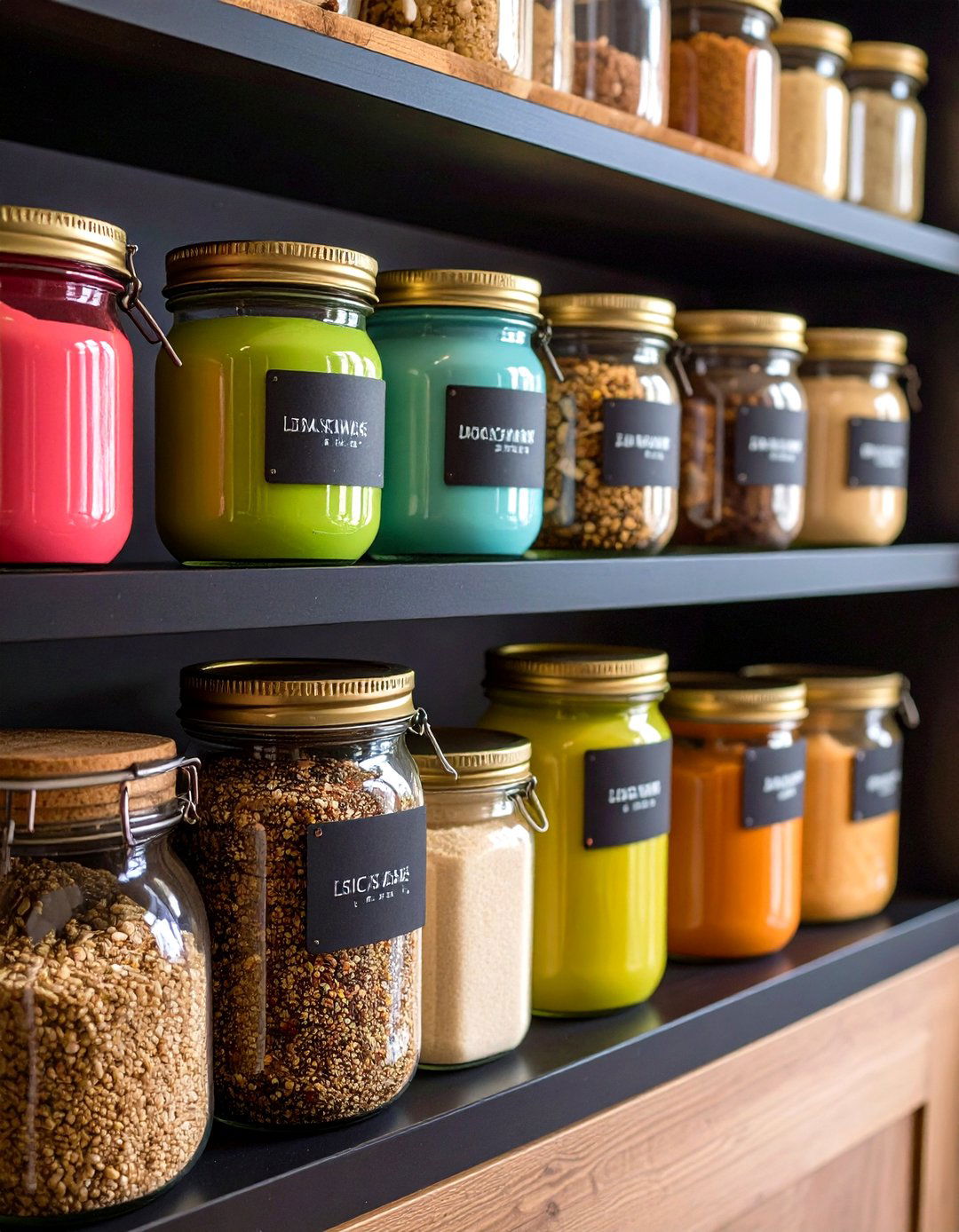
Transform ordinary mason jars into custom pantry organizers with a quick paint-and-label DIY project. Paint lids to match your kitchen palette, then transfer dry goods into the jars for airtight, eco-friendly storage. Recycled glass jars reduce plastic waste and add a charming, rustic aesthetic to open shelving. Use chalkboard paint on a small strip of each jar for erasable labels, allowing you to refill and relabel ingredients as needed without buying new stickers.
Conclusion:
With these 20 ideas, your small pantry can become a model of efficiency and style. By combining off-the-shelf solutions—like pull-out drawers, door-mounted racks, and magnetic spice holders—with budget-friendly DIY hacks such as painted mason jars and under-shelf baskets, you’ll maximize every inch of space. Consistent labeling, clear containers, and thoughtful lighting ensure that items stay organized and visible, reducing clutter and food waste. Whether you choose one or implement several strategies, these ideas will help you transform even the smallest pantry into a functional, beautiful extension of your kitchen.


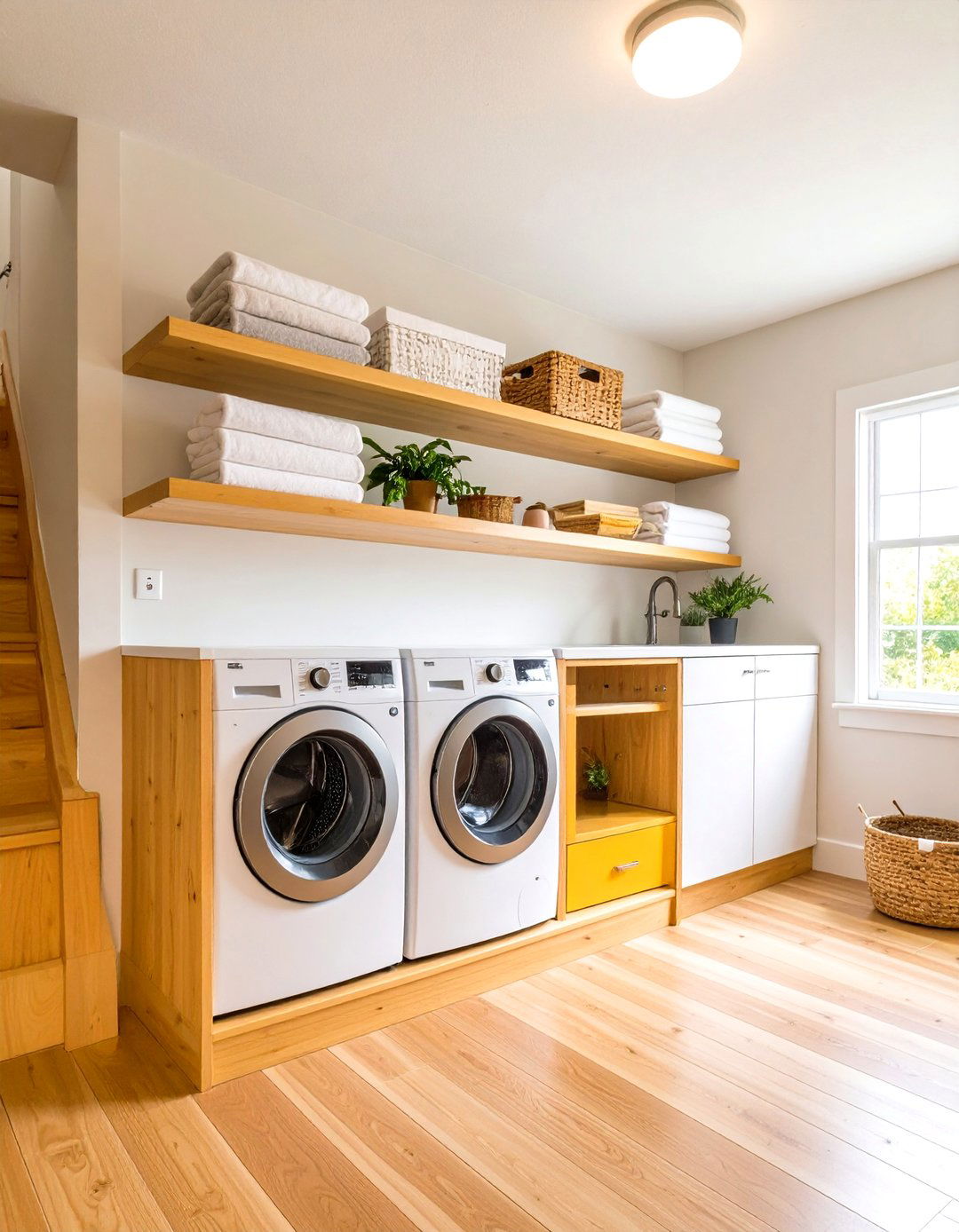

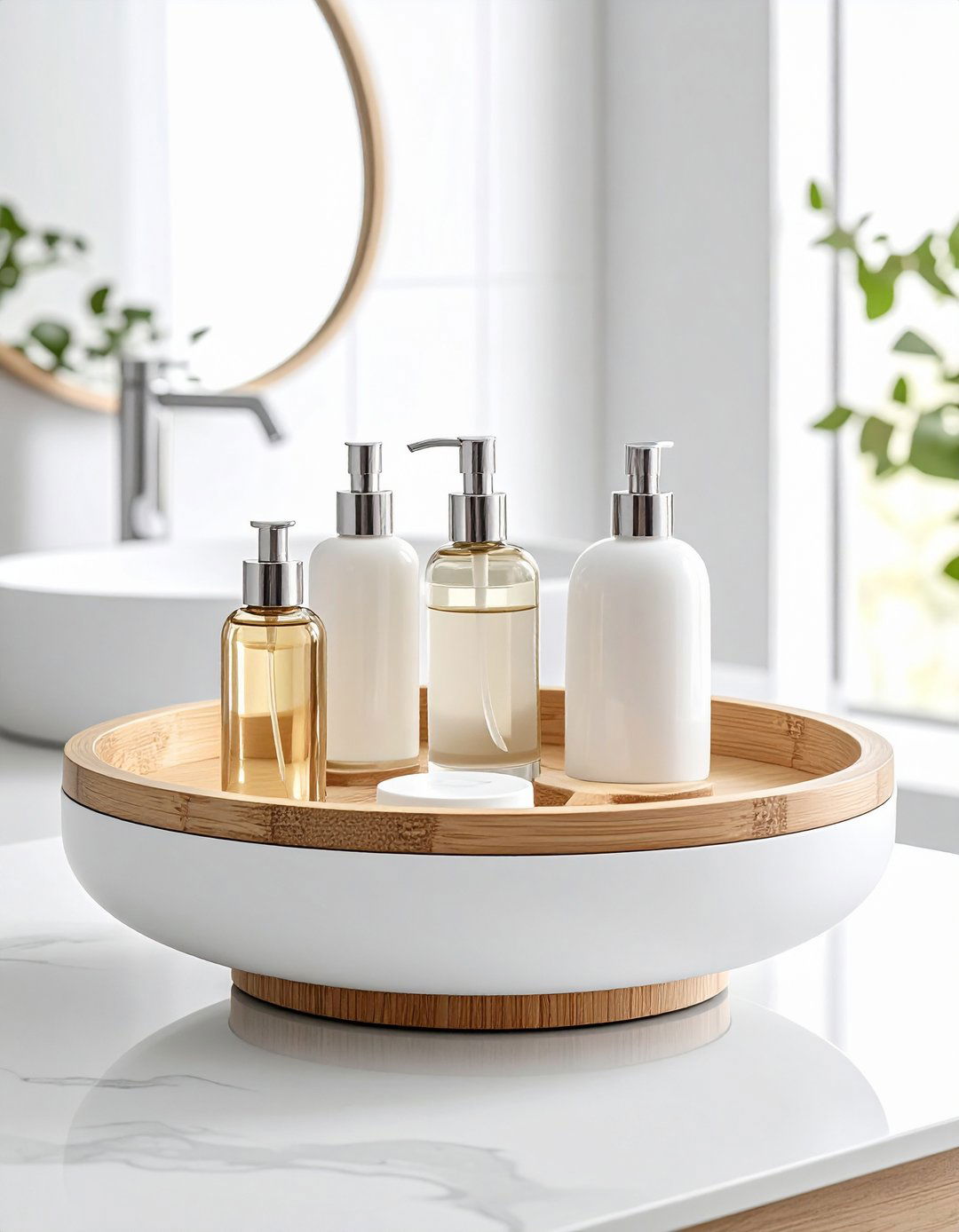
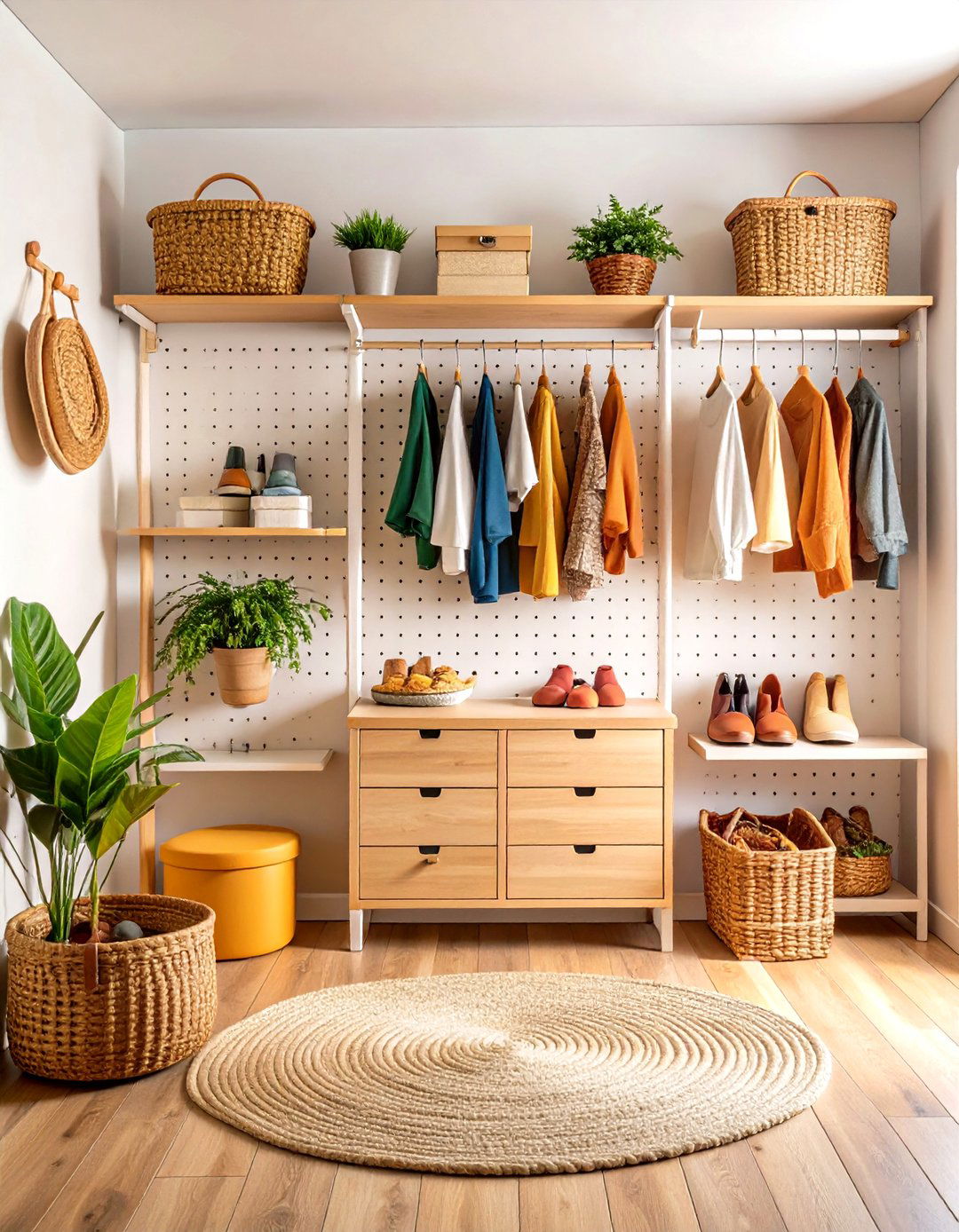
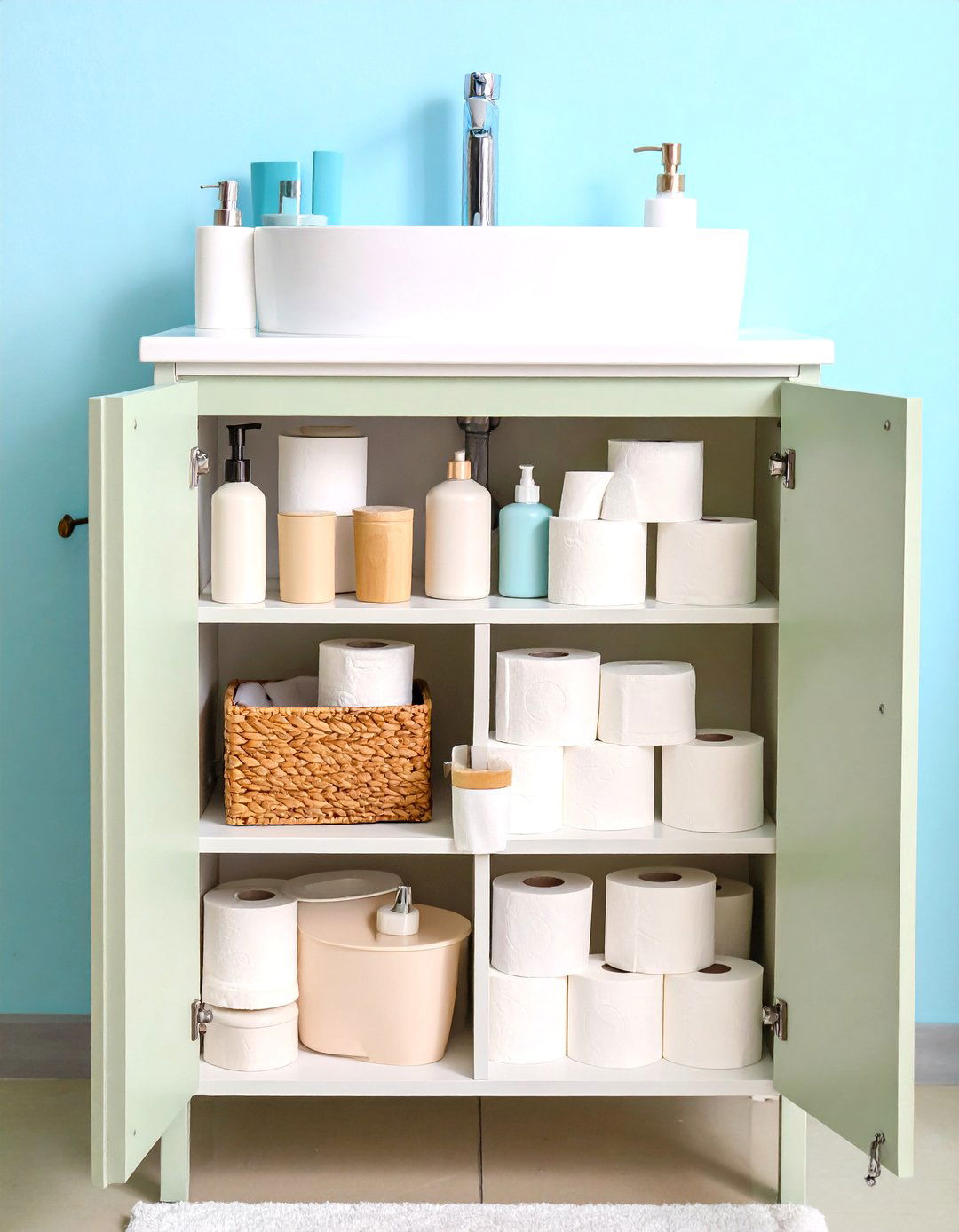

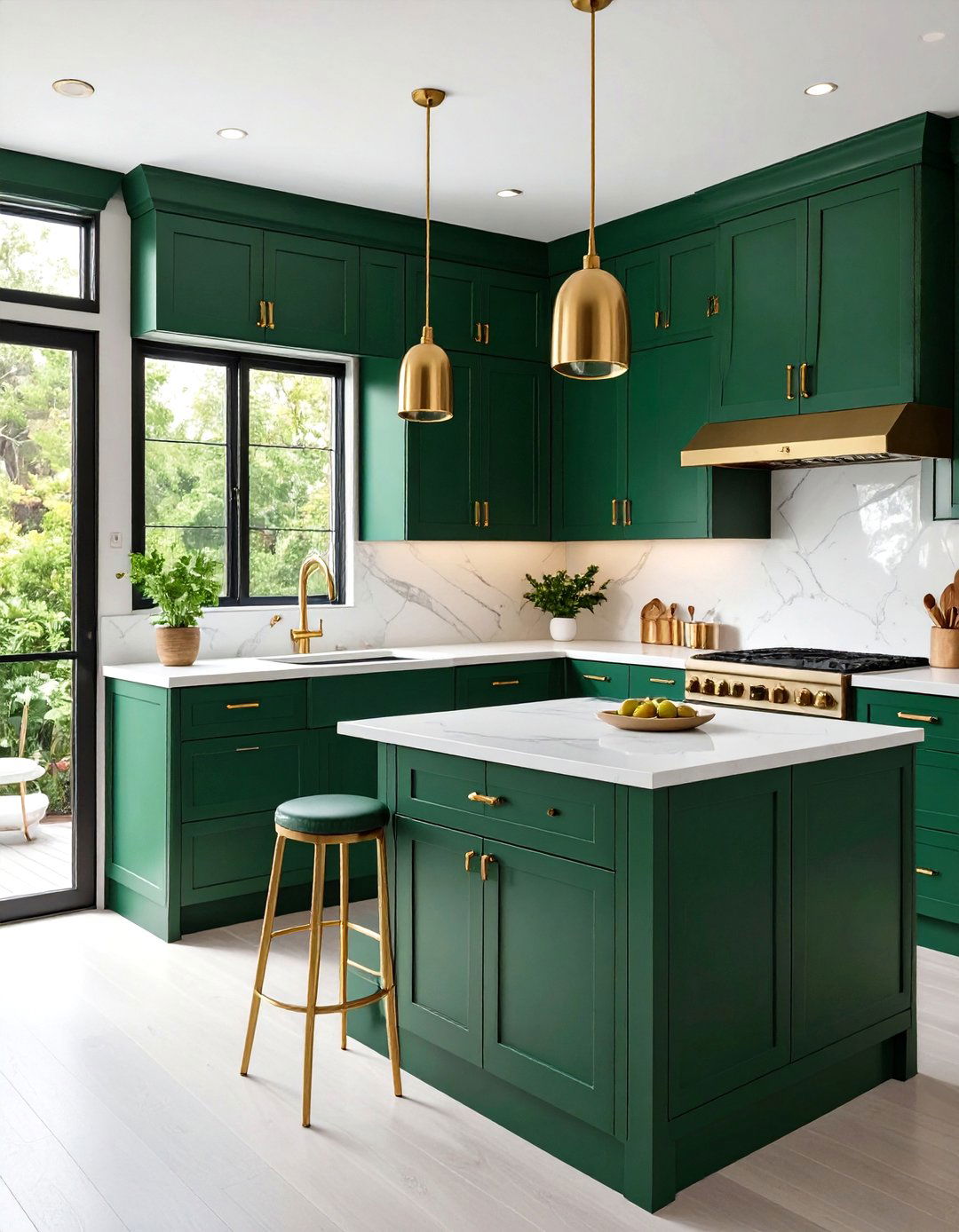
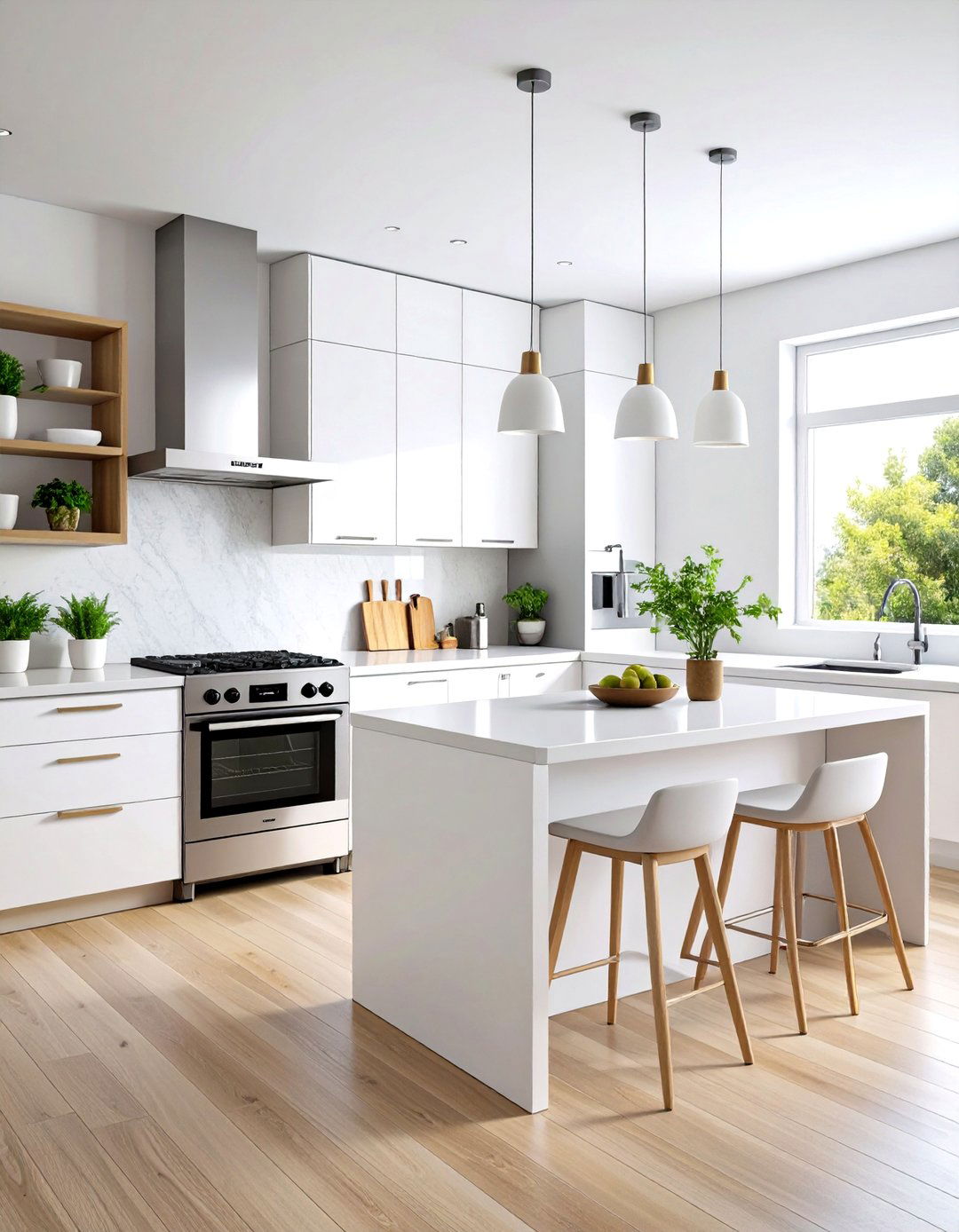
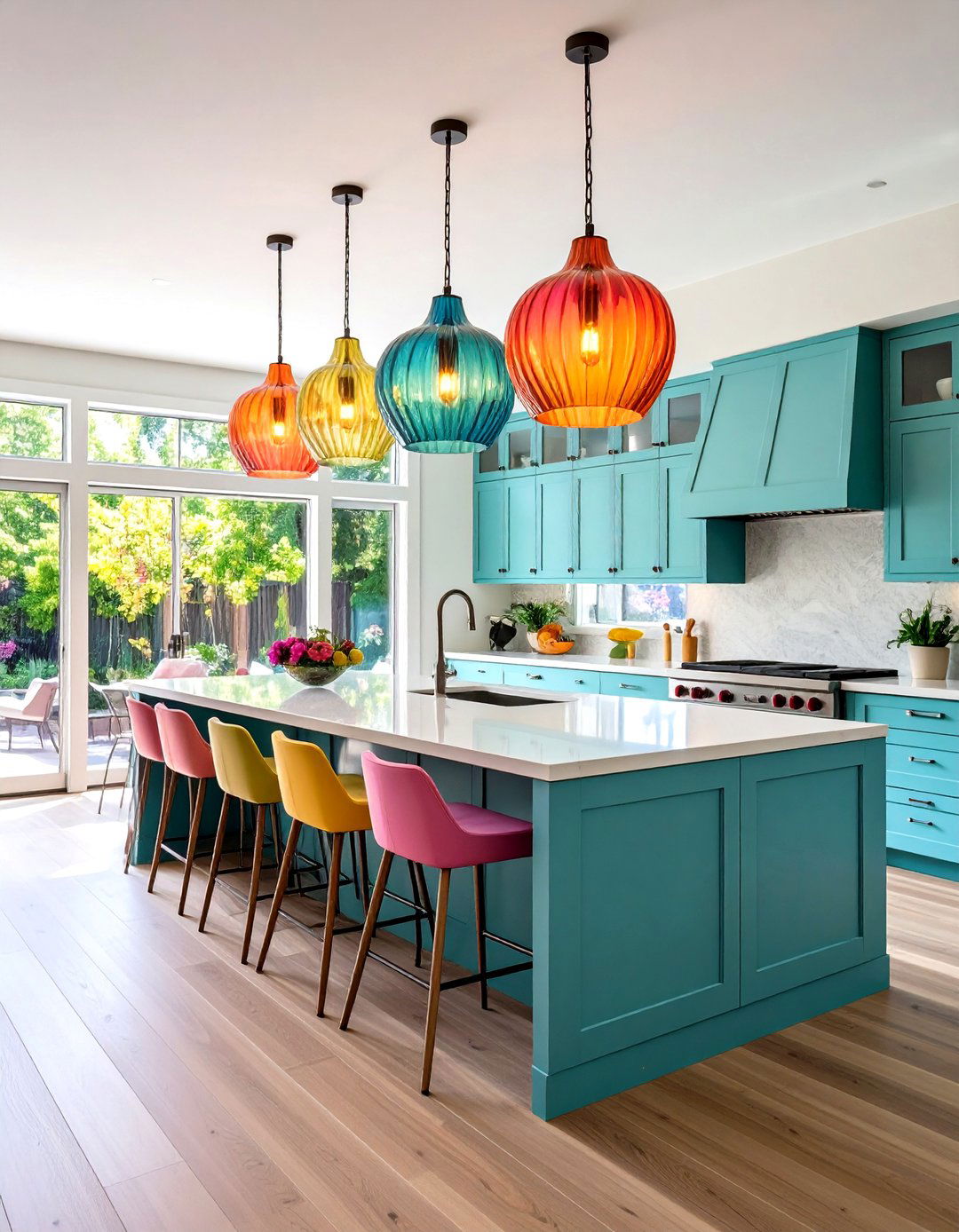
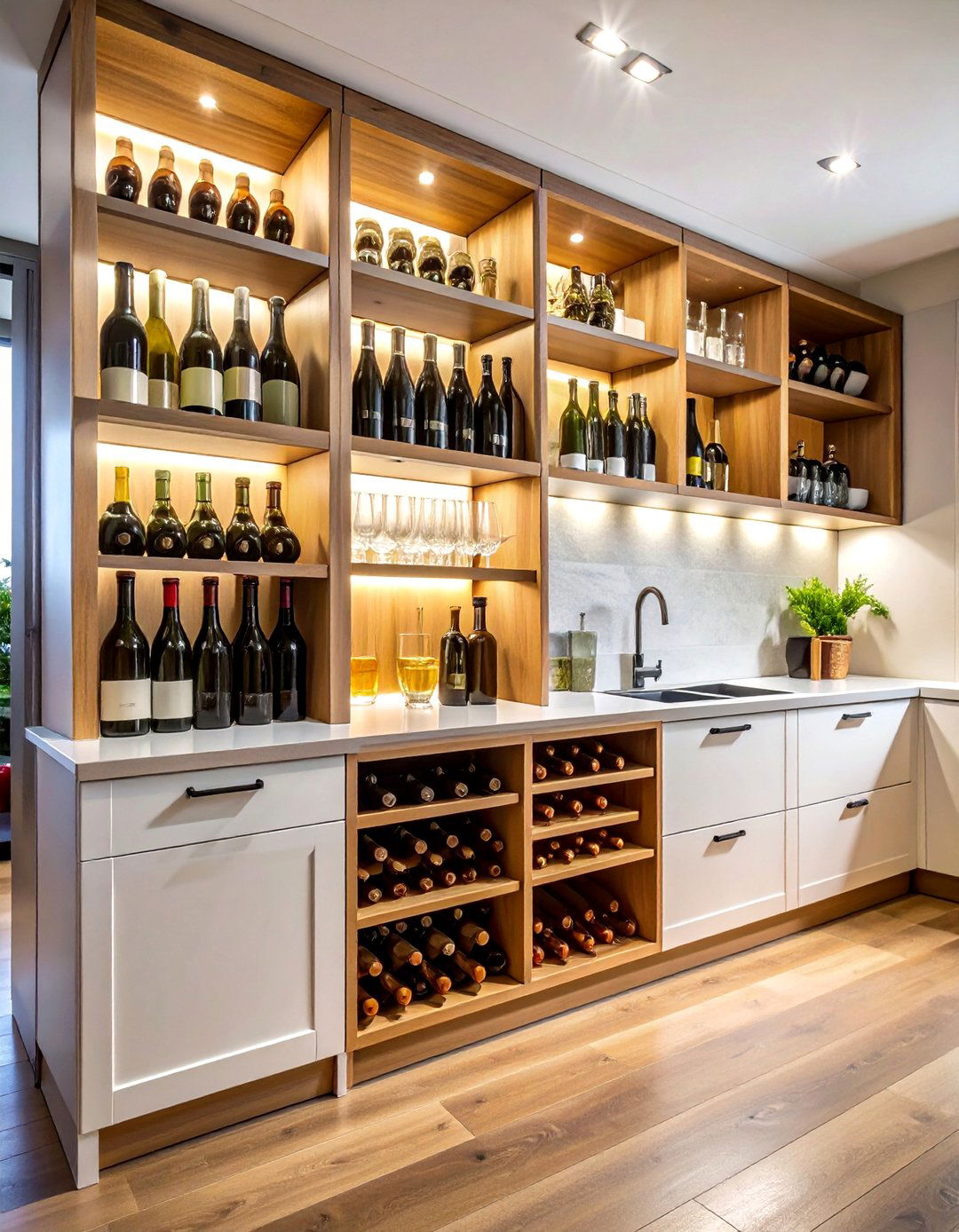
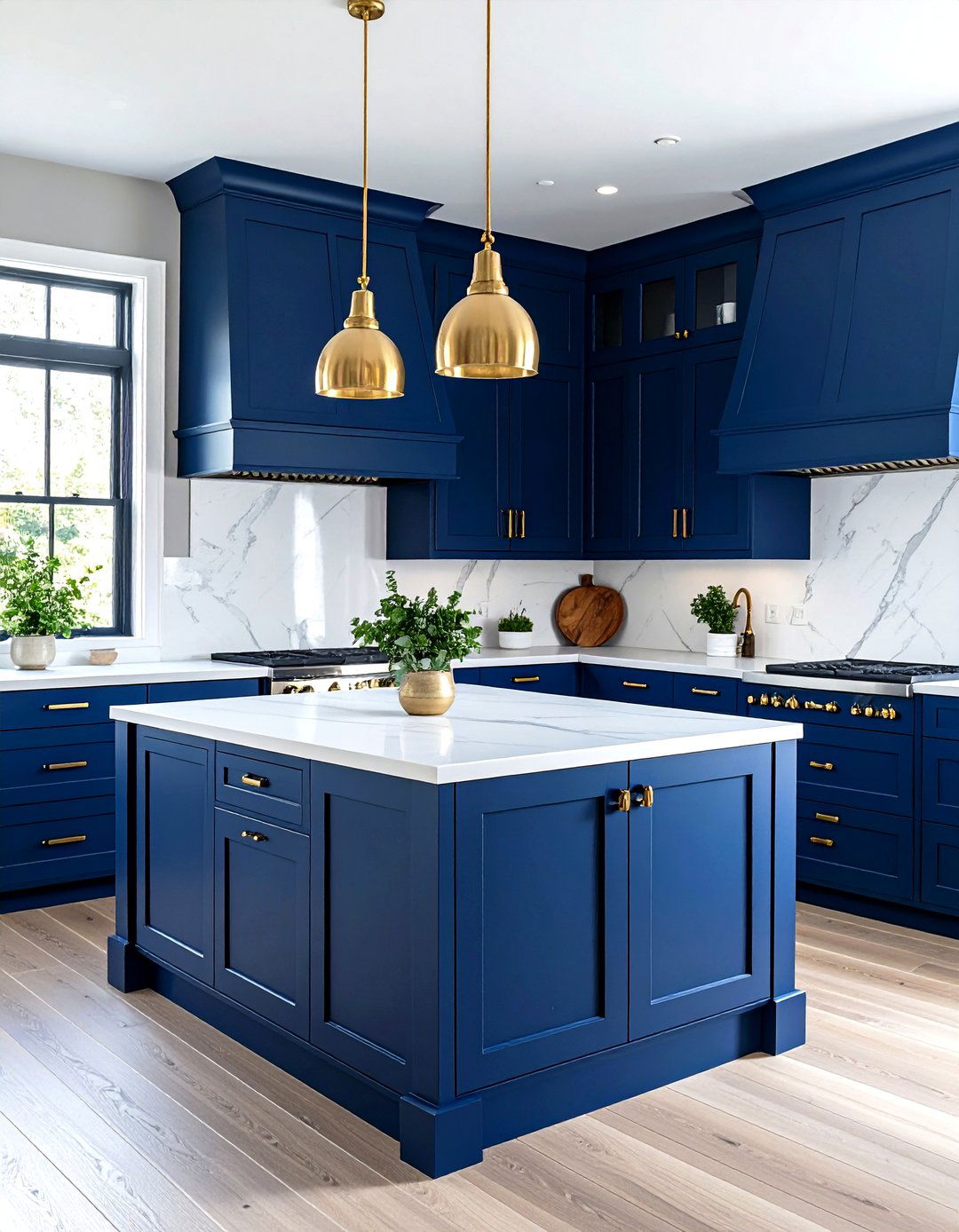

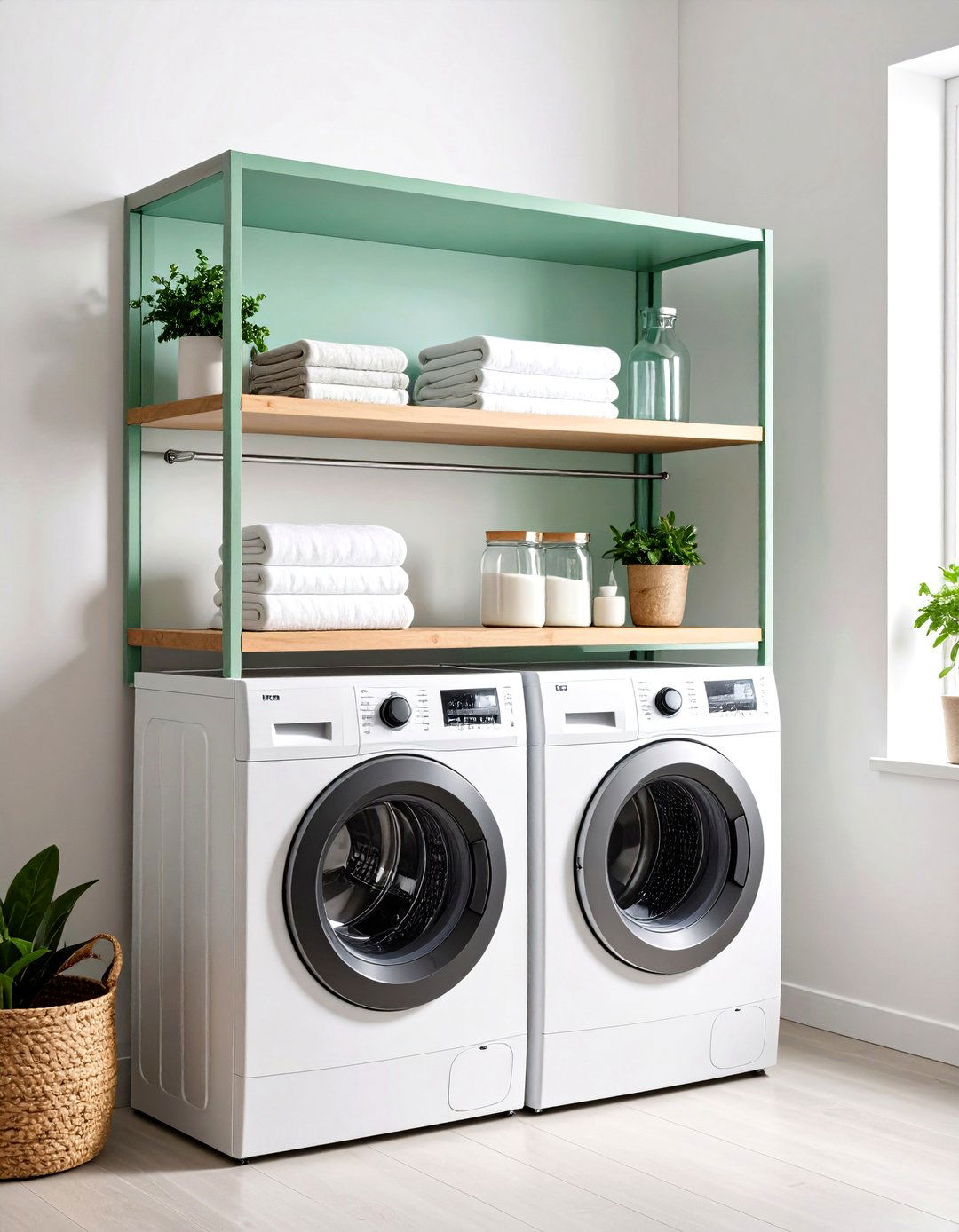
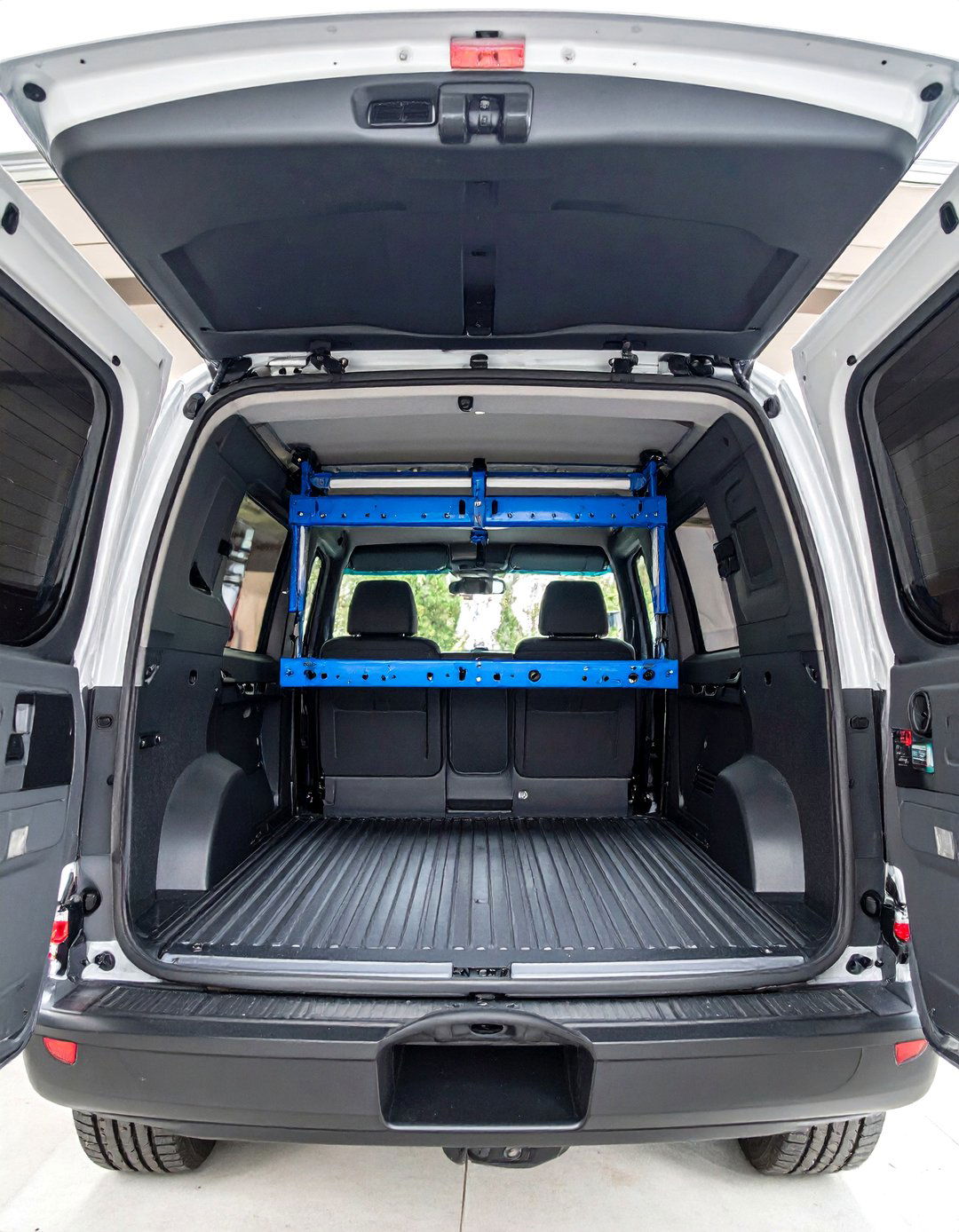

Leave a Reply